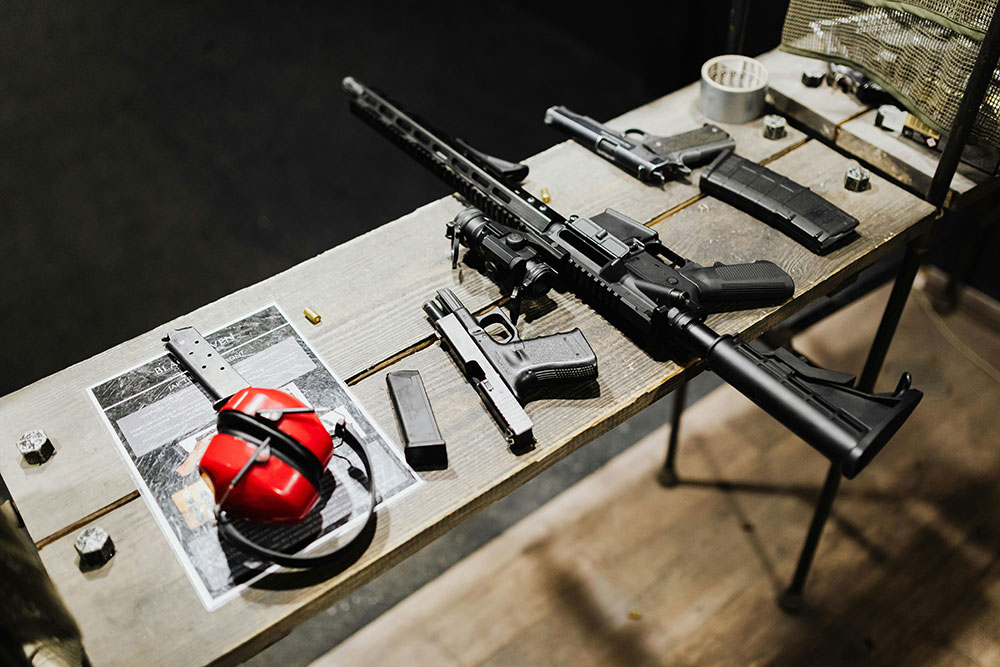Many civilians invest in tactical gear for personal safety, outdoor activities, or emergency readiness. Good equipment supports confidence and helps you handle tough situations with control. The problem begins when people buy gear without understanding how each item works or how it fits into their daily needs. Some rely on brand names instead of function. Others overpack or choose tools that slow them down. These mistakes can turn helpful gear into unnecessary weight.
This guide clears up the most common tactical gear errors. It shows you how to build a setup that serves your real goals and keeps you safe without adding stress or confusion.
Buying Gear Without Defining Your Purpose
Civilians often rush into buying tactical gear without thinking about what they actually plan to do with it. This creates clutter and drains money fast. Every piece of gear serves a purpose, so you need to know your goals before you spend. Think about the environments you move through. Home defense needs simple, familiar tools. Hiking or camping needs items that handle weather and rough terrain. Emergency kits focus on reliability and speed. When you define your purpose, you choose gear that fits real situations instead of gear that only looks useful. This approach keeps your setup light, practical, and easy to manage.
Overlooking Simple Firearm Enhancements
Many civilians skip basic firearm upgrades because they assume only major custom work delivers results. Simple enhancements often make a bigger difference. Better sights help you get on target faster. Improved grips give you more control. A smoother trigger can help you stay accurate under pressure. These upgrades do not cost much and do not complicate your firearm.
The Sig P365 conversion kit is a good example of a simple upgrade that adds real value. It gives you options without forcing you to buy a new firearm. You can change size, improve handling, or adjust the setup to fit different needs. This matters for civilians who carry daily or practice often. The kit supports flexibility and helps you stay comfortable with one platform. When civilians pay attention to basic enhancements like these, they get better performance and safer handling without unnecessary complexity.
Choosing the Wrong Protective Gear
Protective gear can save your life, but only if it suits your needs. Many civilians buy armor that feels impressive but does not match the threats they may face. Heavy plates slow movement and tire you out. Helmets that don’t fit well feel distracting and uncomfortable. You need gear that supports your daily routine, not gear that creates extra problems.
Choosing the right level of protection starts with understanding real risks. Most civilians benefit from lighter, well-fitted options that allow quick movement. Fit also matters more than people think. A plate carrier that shifts around can throw off balance. A helmet that feels loose can affect awareness. Test gear, move around in it, and make sure it feels natural on your body.
Overloading Your Gear Setup
A common mistake is carrying too much gear. Many civilians pack items they never use because they fear being unprepared. This leads to heavy bags, crowded belts, and slow reactions. You move more slowly when you carry too much. You also struggle to find what you need in stressful moments.
A better approach is to build a setup based on real tasks. Choose the items you use often and keep them within easy reach. Remove duplicates and things that serve no clear purpose. Test your gear during basic drills or simple everyday tasks. If something slows you down or feels unnecessary, take it out.
Ignoring Quality in Everyday Tools
Everyday tools like flashlights, knives, and multitools support your larger gear setup. Many civilians buy the cheapest option and hope it holds up. This leads to failure when you need the tool most. A knife that bends or a flashlight that flickers can create real trouble.
You should choose tools that handle stress and regular use. Look for solid construction, good materials, and simple controls. A reliable flashlight with steady output helps during blackouts or searches. A strong knife covers cutting tasks without breaking. Quality tools last longer and keep your entire setup dependable.
Skipping Regular Maintenance
Many civilians focus on buying new gear but forget that proper upkeep matters just as much. Weapons, flashlights, optics, and even backpacks need care to stay reliable. Dirt, moisture, and daily handling can cause wear that affects performance. A simple cleaning schedule prevents sudden failures. Flashlights need fresh batteries, and multitools need lubrication to stay smooth. Even medical kits require checks because expired items lose effectiveness. When you give your gear routine attention, you avoid surprises. Maintenance takes only a few minutes, yet the payoff is huge because it keeps every item ready when you need it most.
Wearing Gear That Doesn’t Fit
Poor fit is one of the fastest ways to ruin your experience with tactical gear. Civilians often buy belts, plate carriers, or holsters that look tough but feel awkward. Gear that shifts, digs into your sides, or slows your draw becomes a distraction. You should move, bend, kneel, and walk while wearing each item to see how it handles real motion. A holster should hold the firearm tightly while still allowing a quick draw. A plate carrier should stay secure without restricting your breathing. Even clothing layers matter because fabric that bunches under a belt or carrier affects comfort and reach. When your gear fits well, you focus better and react faster.
Forgetting About Training and Practice
Some civilians build impressive gear setups but rarely train with them. Gear alone cannot help you in stressful moments. Your hands need to move without hesitation, and that comes from practice. Range time improves shooting skill, but you also need to practice drawing, reloading, and moving with your equipment. Training helps you understand how each item works under pressure. Medical skills matter too because even basic injuries need a quick response. When you train regularly, you build confidence and cut down on mistakes.
Tactical gear becomes far more valuable when it supports a lifestyle built on awareness and responsibility. When civilians commit to learning their equipment, caring for it, and shaping it around real-world needs, the gear stops being something they simply own. It becomes something they can trust. Real confidence comes from preparation, not from the number of items you carry. Each smart choice strengthens your ability to protect yourself and help others when challenges arise.






